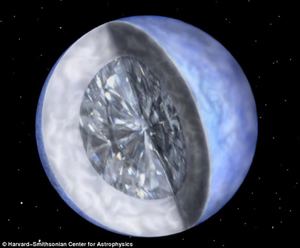Primary PSR J1719-1438 Magnitude 25.4 | Companion PSR J1719-1438b Discovered 2011 | |
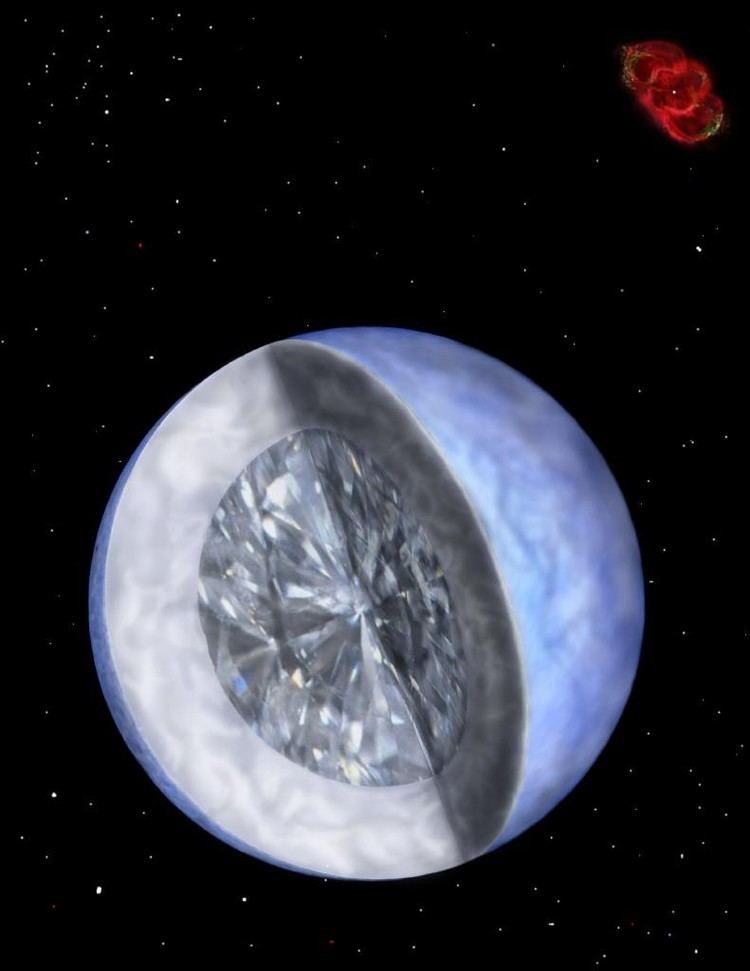 | ||
Similar PSR B1620‑26 b, 91 Aquarii b, PSR B1620‑26, PSR B1257+12, Kepler‑37b | ||
PSR J1719-1438 is a millisecond pulsar with a spin period of 5.8 ms located about 4,000 ly from Earth in the direction of Serpens Cauda, one minute from the border with Ophiuchus. Millisecond pulsars are generally thought to begin as normal pulsars and then spin up by accreting matter from a binary companion.
Contents
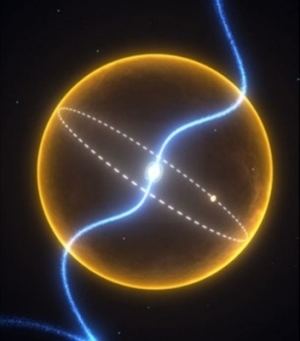
Psr j1719 1438
Diamond planet

PSR J1719-1438 was discovered in 2011 by the High Time Resolution Survey, a radio astronomy search for astronomical objects that rapidly vary in radio brightness, such as pulsars. Timing measurements using the Parkes Telescope and Lovell Telescope showed that it has a low-mass companion: PSR J1719-1438 b. The companion has a mass similar to that of Jupiter, but 40% of the diameter. It orbits the pulsar with a period of 2 hours 10 minutes and 37 seconds, at a distance of around 600,000 km (0.89 solar radii). The companion is likely the remnant of a star whose outer layers were siphoned off by the more massive pulsar. Calculations show the companion has a minimum density of 23 grams per cubic centimeter and is probably an ultra-low-mass carbon–oxygen white dwarf.
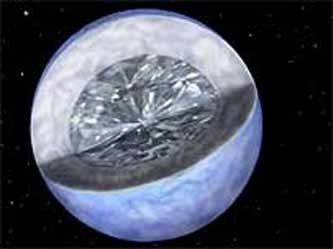
Because the companion to PSR J1719-1438 is planet-sized, made primarily of carbon (with an unknown amount of oxygen), and very dense, it may be similar to a large diamond. In the science press, the object has been called the "Diamond Planet".
A lump of QCD matter
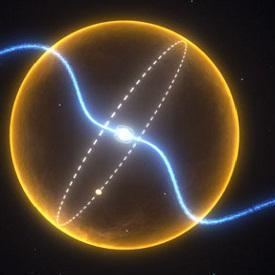
It has been suggested in 2012 that PSR J1719-1438 b may not be the remnant of a white dwarf, but a lump of quark matter with a size of just 1 kilometer and the mass of Jupiter, that would have been born in the collision and merger of two previous quark stars, part of the ejected matter ending orbiting the merger remnant we see as the pulsar PSR J1719-1438.

